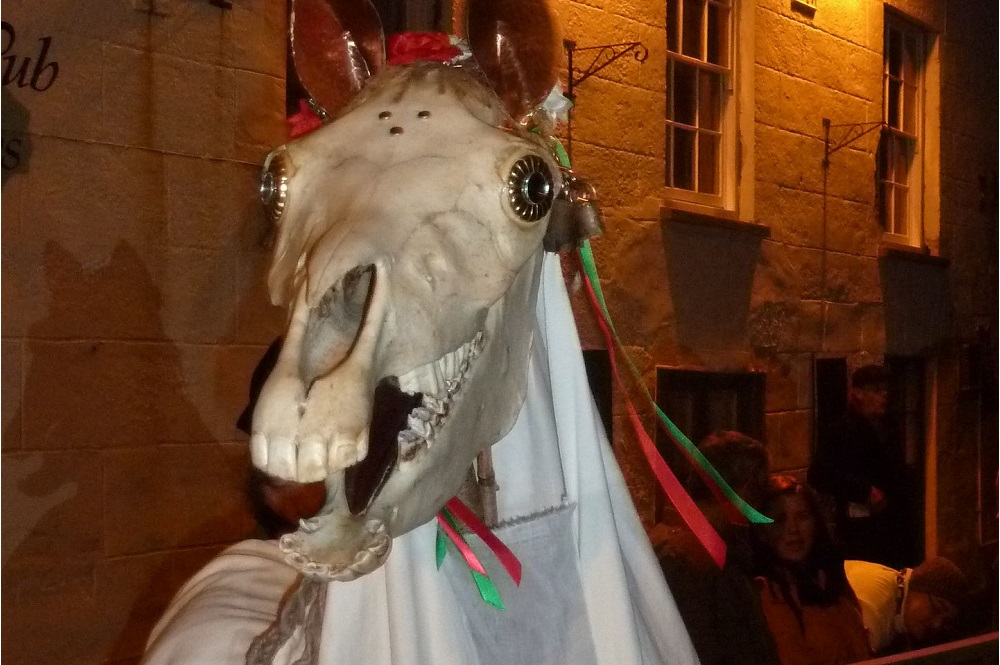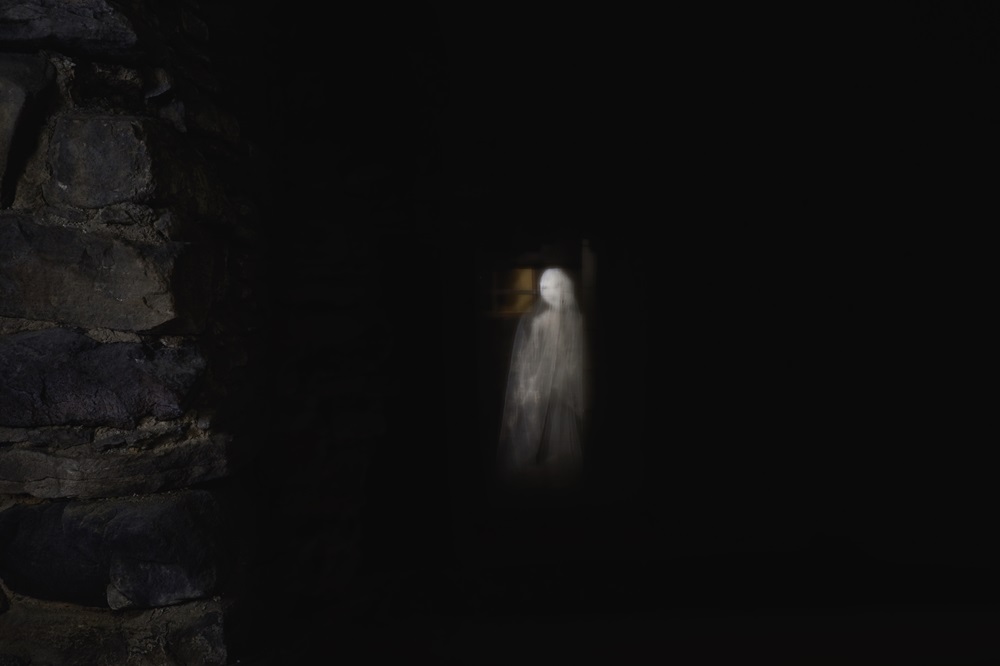Horrifying black sows and ghostly apparitions: how the magic and mystery of Wales come alive in winter

Mari Ellis Dunning, Associate Lecturer at the School of Languages and Literature and PhD Candidate, Aberystwyth University
For centuries, midway between the autumn equinox and winter solstice, the Welsh people have celebrated Calan Gaeaf on November 1. Nos Galan Gaeaf or “the evening before the first day of winter”, falls a day before, which the western world now recognises as Halloween.
A time of year filled with monsters and ghouls, here are five spooky winter customs and beliefs unique to Wales and its people.
Hwch Ddu Gwta
On Nos Galan Gaeaf, the horrifying hwch ddu gwta, or “tailess black sow”, would make its annual appearance. Usually a man draped in cloth or animal hide rising from dwindling fire embers, the hwch ddu would chase the village children home.
As the fire died and the children anticipated the materialisation of the black sow, they would often chant a spooky verse, like: “Adref, adref am y cynta’, Hwch Ddu Gwta a gipio’r ola,” (“Home, home, at once, the tailess black sow shall snatch the last one.”)
Juliette Wood, scholar of Celtic folklore, says the macabre ritual has its roots in beliefs about the souls of the dead, people and animals. But on a practical level, it was probably just an effective way of getting children to bed and teaching them about the dangers of straying from the group.
Fortune telling
Fortune telling would have been rife at this time of year. Questions over who was next to be married, and who may meet an untimely death, were particularly popular. Women looking for love may have wandered around the bounds of a church, chanting “here is the sheath, where is the knife”, hoping to hear the name of the person they would marry as a response.
In some parts of the country, stwmp naw rhyw, a mash made of nine different root vegetables with milk, butter, salt and pepper, would have a wedding ring placed at the centre. Whoever found the ring in their serving would be the next to be married.
Though these particular practices were performed at Calan Gaeaf, the widespread belief in fortune telling certainly wasn’t unique to this time of year, nor Wales, of course.

But Wales does have a long history of reliance on wise-women and soothsayers. Many Welsh people even regularly turned to the church for charms and curses.
Y Ladi Wenand other apparitions
Regarded as a seasonal boundary, Nos Galan Gaeaf was considered the most ominous of the three spirit nights. The others were Nos Galan Mai, which heralds the beginning of summer, and Noswyl Ifan, known also as the summer solstice.
As Nos Galan Gaeaf was a time to say goodbye to the recently deceased, the spirits were said to roam freely. Ghosts of the dead were believed to be seen at midnight on every stile, for example. And it makes sense that ghosts were to be found atop stiles. The fact that unbaptised children used to be buried at boundary fences suggests that these lines were liminal places and therefore the favourite perches of ghosts and apparitions.

Perhaps the most well known of these ghosts was Y Ladi Wen (the White Lady). Y Ladi Wen was an apparition who could be found haunting locations where violent deaths had occurred. She was also said to warn children about their bad behaviour.
Mari Lwyd
The Mari Lwyd is traditionally a Christmas and New Year wassailing folk custom popular in south Wales. It dates back to the 18th century and involves a horse’s skull placed on a pole, draped in ribbons.
A person hiding beneath a white sheet would carry the pole and snap the horse’s jaw open and shut. A procession led by Mari would go from house to house, where the group would sing verses asking to be let inside, prompting the hosts to improvise a rebuttal in verse.
The Mari Lwyd’s weird and somewhat terrifying appearance has led to her appearing earlier in the season, and adopted in different parts of Wales and as far afield as the US and Australia.
Gwrachod Powys
Perhaps the most sinister and spooky custom is one that could be found in Powys, mid-Wales.
Men would wander around in gangs wearing sheep skin, old ragged clothes and masks, drinking heavily and demanding gifts. They were called “gwrachod” (meaning hags or witches), probably in allusion to the Celtic belief that fiends, witches and faeries carried out their harmful and destructive tasks at night.
In the north, the name “gwrachod” was also used to describe men and women who went about their neighbours’ houses dressed in each other’s clothes and wearing masks.
During this Christmas tradition, which could be seen as a combination of the Mari Lwyd and the gwrachod, members of the party would dance, cheer and perform “antic diversions” in exchange for good cheer, ale, apples and nuts.
As October draws to a close and we creep towards the darkest days of midwinter, keep your wits about you. You might just end up face to face with a horrifying sow covered in fire ash, or confronted by a ghostly lady draped in white.
Support our Nation today
For the price of a cup of coffee a month you can help us create an independent, not-for-profit, national news service for the people of Wales, by the people of Wales.




